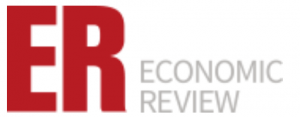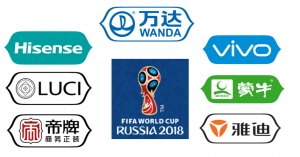2018 Russia World Cup ended after the thrilling matches from national teams all over the world. While the fierce competitions unfolded on the fields, there was another competitive game happening over the advertisement between global brands. International sports events such as the Olympics and the World Cups present the perfect marketing opportunity to grab people’s attention.
According to the Hyundai Research Institute, the Pyeongchang Olympics 2018 contributed to one percentage point increase in the brand awareness of Korea’s top 100 brands, generating economic benefits worth KRW 11.6 trillion (1.332 billion) as a result. Sports are intricately linked with the economy and brand marketing.

As China’s emergence as the second largest economy increasingly impacts the world’s economy, we see several signals of “China’s power”. For instance, the U.S. government tries to block the sales of China-made products, indicating that the U.S. is threatened by the growth of the Chinese economy. We saw advertisements featuring major Chinese corporations at this year’s World Cup in Russia as they make their way onto the world stage. Economic Review, one of Korea’s widely-read weekly business magazines, published an article highlighting this phenomenon and analyzed why Chinese companies are keen to sponsor international sporting events, in which they quoted CKGSB Knowledge.

Although China’s soccer team did not qualify to play, their large commercial influence in the World Cup is very interesting. According to a marketing agency, Zenith, Chinese companies spent the most in marketing at the World Cup with a total of USD 835 million in ad spend. This figure is double the amount spent by Russia companies, and overwhelmingly more than U.S. companies. In addition, the number of Chinese corporations sponsoring the World Cup increased from one in 2014 to seven in 2018. These companies contribute to a large part of China’s GDP, such as WANDA, Hisense, Vivo, Mengniu, Yadea, Luci, and Diking. WANDA, one of the largest Chinese multinational conglomerate which operates in real estate, entertainment and tourism, was appointed as a ‘FIFA Partner’, which allowed them authorization to market themselves throughout the official event.

In contrast to Western companies who are refraining from advertising in the World Cup due to FIFA’s past corruptions, Chinese firms are trying to establish their brand through international sponsorship opportunities as they expand overseas. According to CKGSB Knowledge, “Made in China” is no longer a symbol of cheap and poorly made products; Chinese consumers and brands are more confident than ever of their brand power. According to a report by McKinsey, 62% of Chinese consumers preferred Chinese products when comparing to similar quality of products made by foreign companies. This is in contrast to a 2004 survey conducted by Gallup, which indicated that 40% of Chinese consumers saw domestic products’ as ‘low or normal’ quality. Corporations hoping to dispel the “Made in China” prejudice and compete internationally will take these sporting events as an opportunity to drive brand awareness. This year’s World Cup is just the beginning as nascent Chinese brands mature around the world.
To read the original article, please click here.